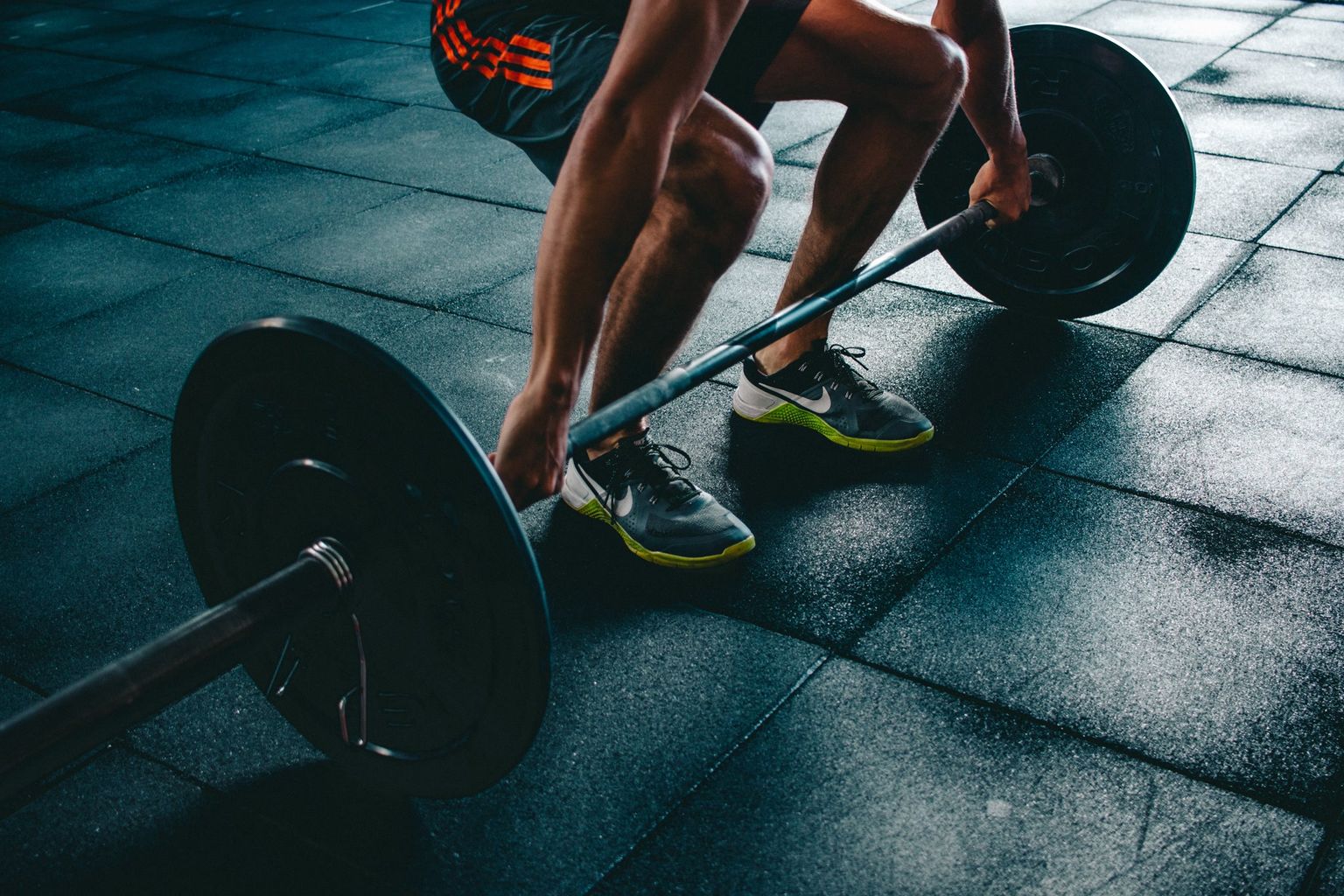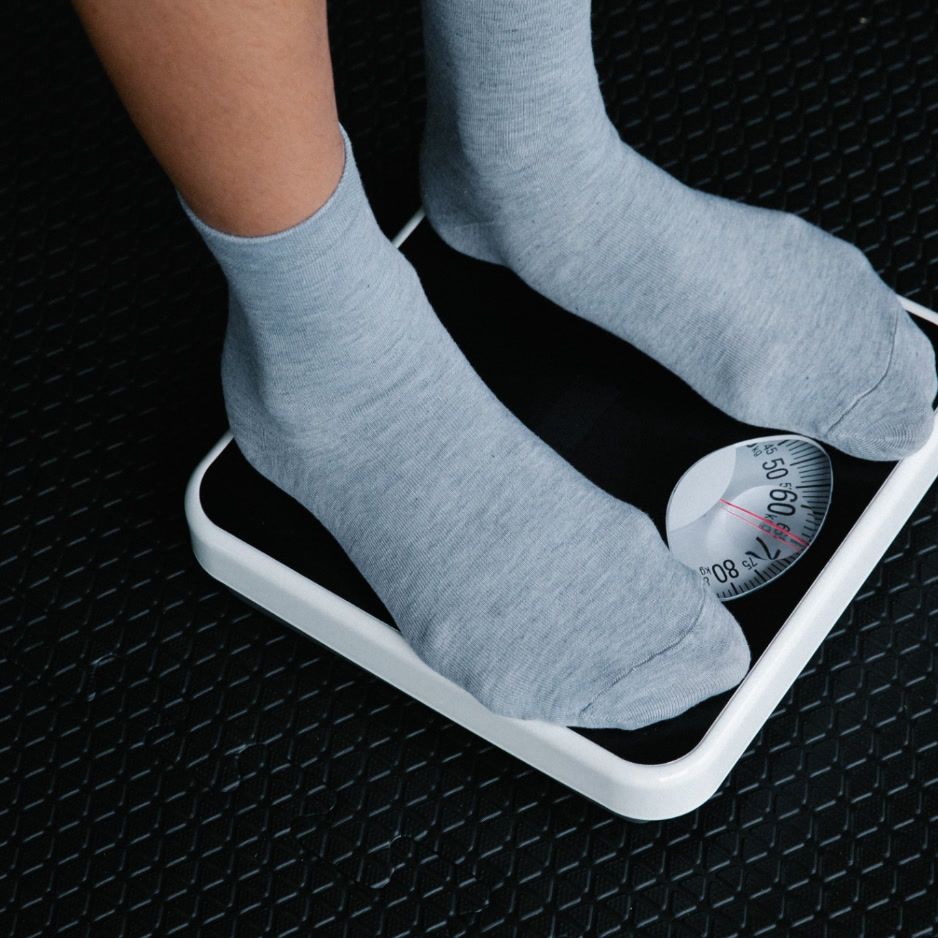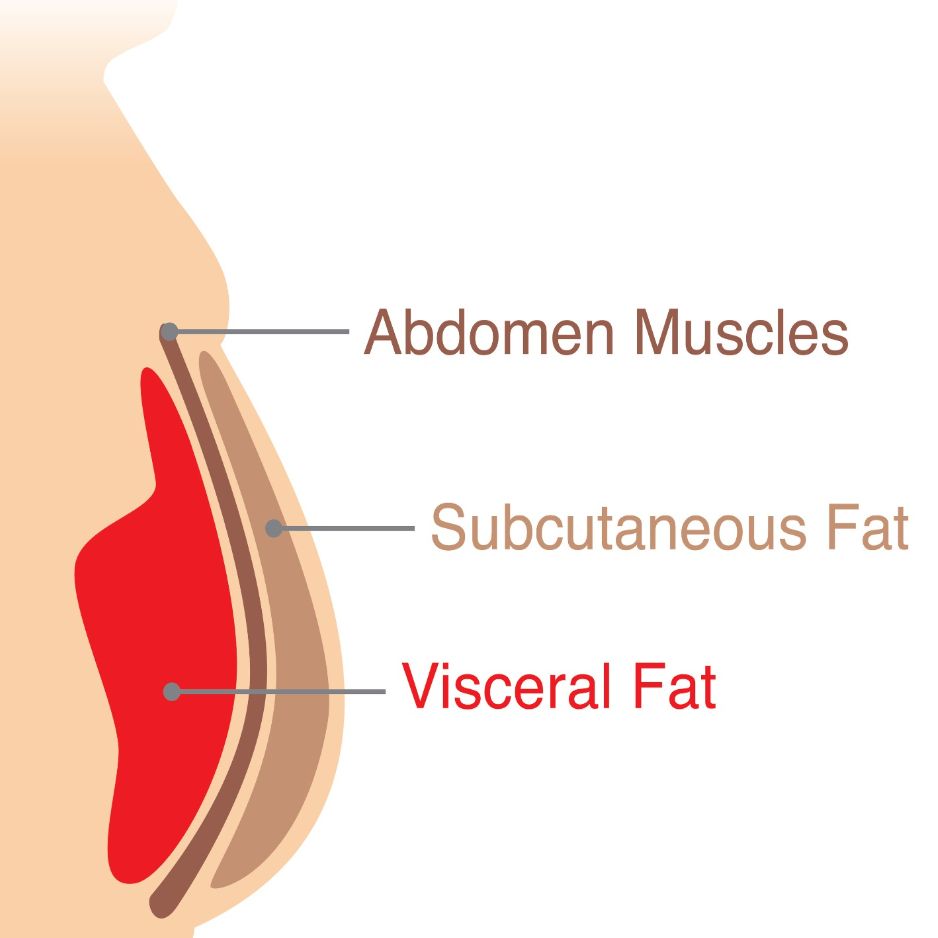How to Run Faster: Science-Backed Training Guide

How to Run Faster: Science-Backed Training Guide
Want to crush a new 5K PR, hang with the fast pack at your local club run, or simply stop feeling stuck at the same pace? You’re in the right place. This deep-dive shows you exactly how to run faster—using workouts, form tweaks, strength moves, and recovery tactics validated by research and proven effective by runners of all levels.
Table of Contents
- Find Your Baseline & Set Smart Goals
- Training Principles Behind Getting Faster
- 7 Proven Workouts to Boost Speed
- Form & Biomechanics: Drills That Pay Dividends
- Strength, Plyometrics & Mobility
- Recovery & Injury Prevention
- Fueling for Speed
- Sample 4-Week Speed Plans
- Frequently Asked Questions (FAQ)
Find Your Baseline & Set Smart Goals
Before you can speed up, you need to know how fast you run right now and what counts as a realistic target.
| Assessment | How to Do It | What It Tells You |
|---|---|---|
| Time Trial | Warm-up → run a hard, even-paced 1 mile or 5K | Current race-pace benchmark |
| Talk Test | Can you speak in full sentences? That’s “easy pace.” | Builds aerobic base |
| Cadence Check | Count steps for 30 s × 2 | Stride rate vs. efficiency |
Plug these numbers into a pace calculator to create zones (Easy / Tempo / VO₂-max / Repetition).

SMART Goal Example
“Run a sub-25-minute 5K (8:02 min/mi) in 12 weeks.”
Current 5K: 27:10 → requires ~8 % reduction in finish time—ambitious but doable.
Training Principles Behind Getting Faster
- Specificity – run at, near, and faster than goal pace.
- Progressive Overload – increase either intensity or volume ≈ 10 % per week.
- Polarization (80/20 Rule) – about 80 % easy mileage, 20 % hard work. A 2014 study on well-trained athletes found polarized plans out-performed threshold-only or high-volume approaches.
- Recovery – adaptations happen when you rest, not while grinding.
7 Proven Workouts to Boost Speed
| Workout | How to Do It | Beneficial Adaptation |
|---|---|---|
| Sprint-Interval Training (SIT) | 6×30 s all-out, 4 min walk/jog recovery | ↑ max sprint speed & VO₂-max (2018 study) |
| 400 m Repeats | 8×400 m at a pace 5 s per 400 m faster than goal 5K pace; jog 200 m | Lactate tolerance, race-pace familiarity |
| Tempo Run | 20 min @ “comfortably hard” (≈ 25–30 s slower than 5K pace) | Raises lactate threshold |
| Fartlek | 6×2 min fast / 2 min easy in a 40-min run | Neuromuscular speed, mental variety |
| Hill Sprints | 10×10–15 s uphill, walk-down recovery | Power, stride turnover, injury-proofing |
| Progression Long Run | Finish final 20 % at marathon→half-marathon pace | Aerobic endurance + fast-finish confidence |
| Strides | 4–6×80 m accelerations post-easy run | Form cleanup, teaches “running tall” |
👉 Programming tip: Beginners start with one speed session per week; experienced runners can handle two.
Form & Biomechanics: Drills That Pay Dividends
Running economy—the oxygen cost to hold a pace—can differ by up to 30 % between athletes (2017 analysis). Key factors to focus on include:
Cadence & Stride Length
• Elite distance runners average ~180 spm, but optimal cadence is individual.
• A study of elite ultramarathoners found that increasing cadence by ~5 spm improved economy without raising injury risk (PubMed 30543498).
Three Biomechanical Drills
| Drill | How | Why It Works |
|---|---|---|
| A-Skip | Skip forward, drive knee up, foot dorsiflexed | Reinforces knee lift & paw-back |
| High Knees | Quick, light contacts for 20 m | Boosts cadence, hip-flexor power |
| Butt Kicks → Accelerate | Heels to glutes, then stride out | Trains posterior-chain recoil |
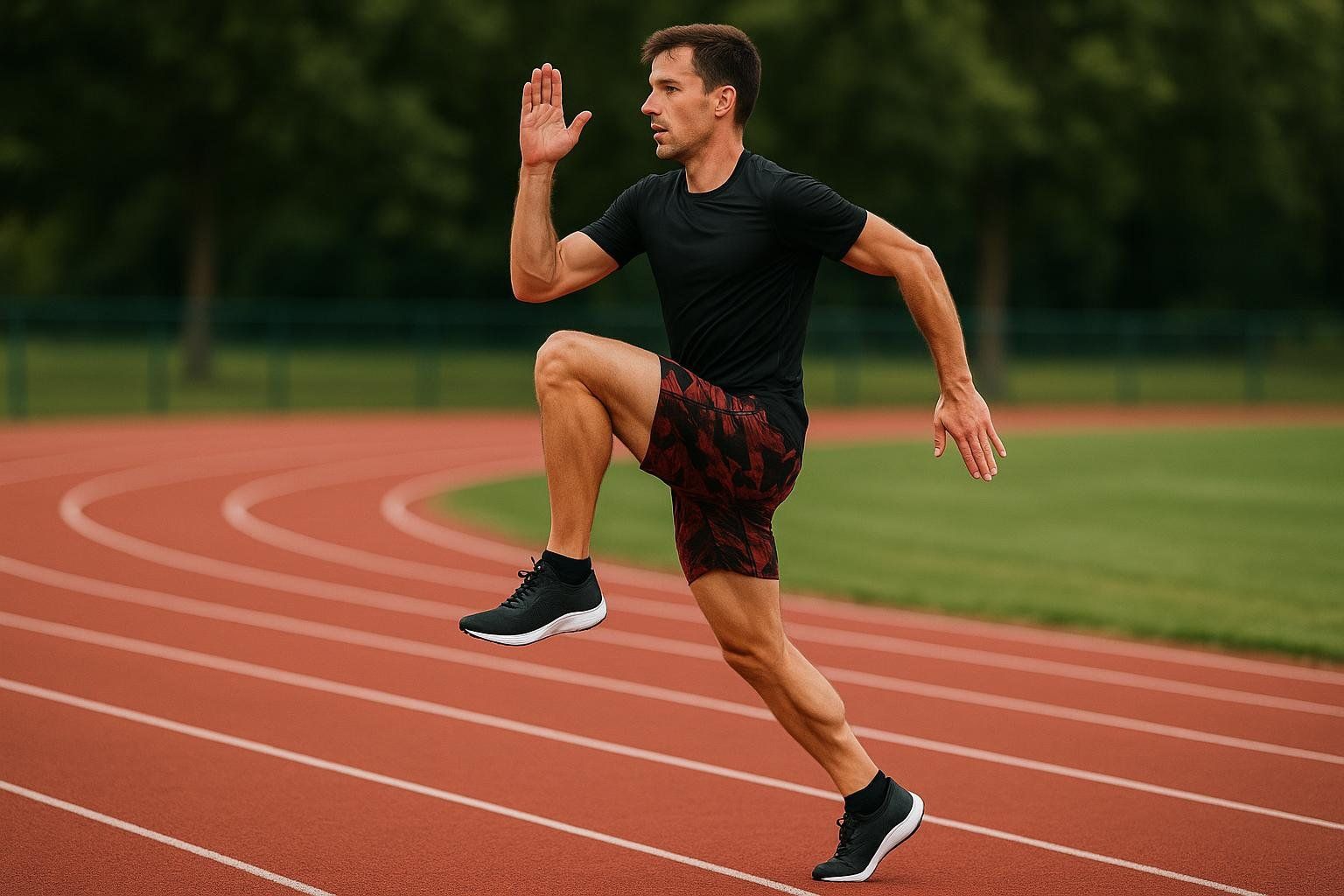
Do 2–3 drill sets before speed workouts; total time ≈ 2 minutes.
Strength, Plyometrics & Mobility
Running faster isn’t just about logging miles. Two weekly gym sessions can sharpen performance and reduce injury risk by >60 % according to a 2018 meta-analysis (systematic review).
| Focus | Key Moves | Sets × Reps |
|---|---|---|
| Max Strength | Back squat, Romanian deadlift | 3–4 × 4–6 |
| Single-Leg Stability | Bulgarian split squat, step-ups | 3 × 8 each side |
| Plyometrics | Box jumps, hop-and-stick, jump rope | 2 × 6–10 |
| Core & Hips | Side plank, dead bug, monster walks | 3 × 30 s / 12 reps |

Mobility matters, too: 5–10 minutes of foam rolling plus dynamic stretches keeps tissues springy.
For deeper guidance: Strength Training for Runners
Recovery & Injury Prevention
| Strategy | Why It Matters | Quick Action |
|---|---|---|
| Sleep 7–9 h | Hormone regulation, tissue repair | Create a wind-down routine |
| Easy Days | Restore glycogen & neuromuscular freshness | Keep HR < 70 % max |
| Active Recovery | Clears metabolites | Cycling, swimming, mobility flow |
| Track Body Composition | Power-to-weight ratio | Schedule quarterly DEXA scans |

Fueling for Speed
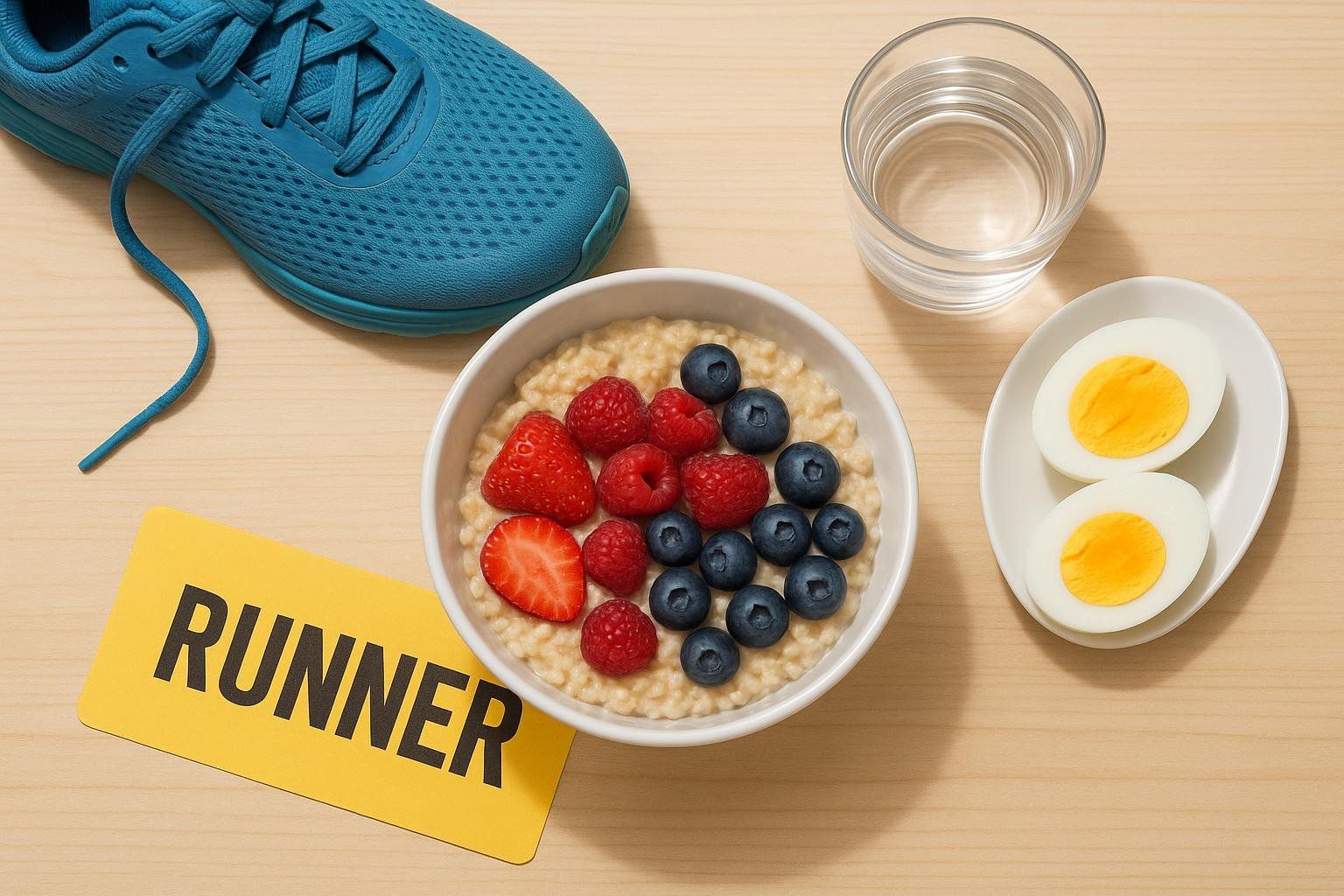
• Carbs: 3–7 g/kg/day to fuel quality sessions.
• Protein: 1.4–1.8 g/kg/day for repair and adaptation.
• Caffeine: 3–6 mg/kg 45 min pre-run can trim ~1–2 % off race times (2021 Nutrients review).
• Hydration: A 2 % body-weight water loss can slow pace by >5 %.
Sample 4-Week Speed Plans
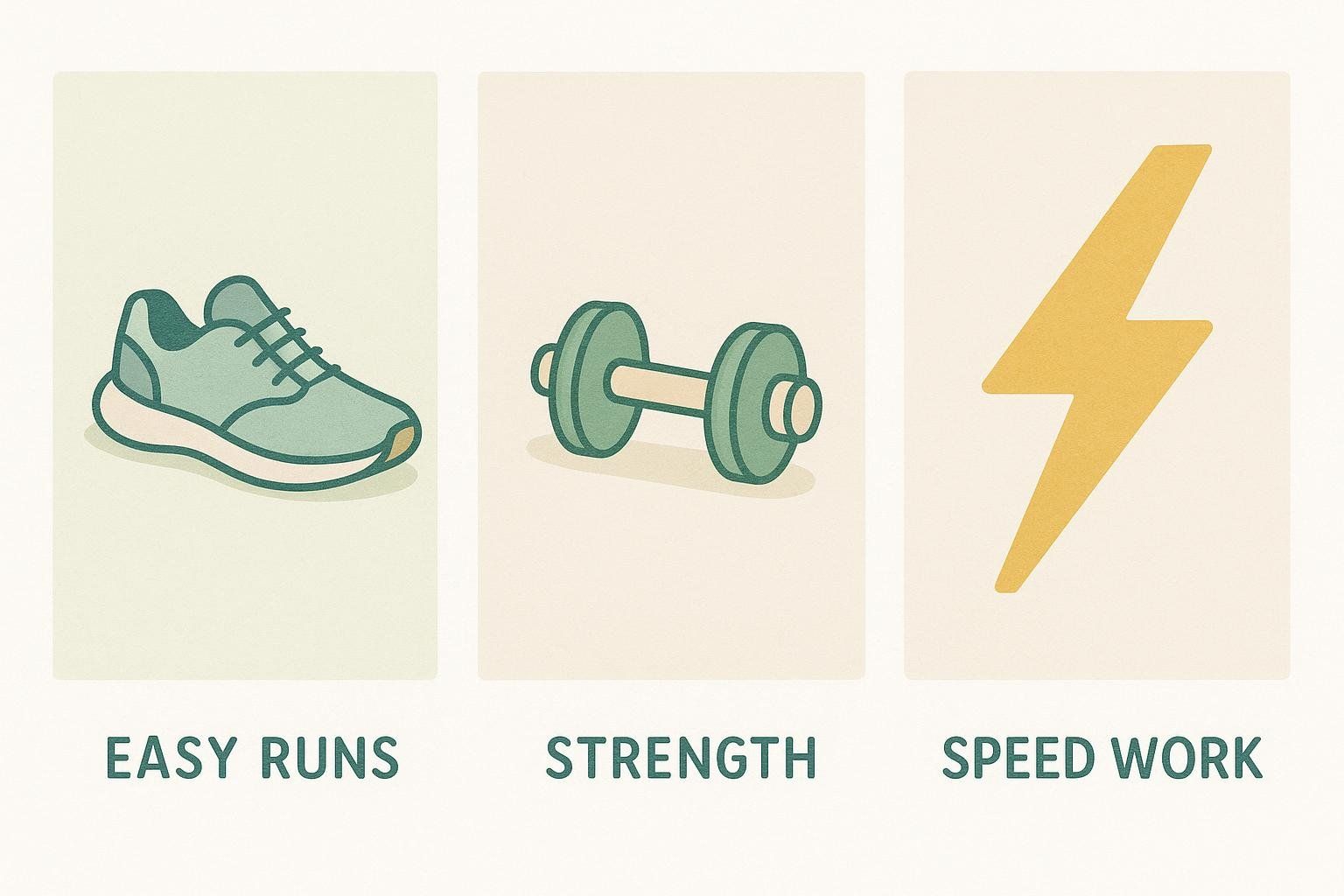
Plan A: Beginner Plateau-Breaker
| Week | Key Speed Session | Long Run |
|---|---|---|
| 1 | Strides: 6×30 s | 4 mi easy |
| 2 | 400s: 4× @ 5 s/400 m faster than goal 5K pace | 5 mi easy |
| 3 | Tempo: 12 min steady | 5 mi easy |
| 4 | Deload: easy runs | 4 mi easy |
Plan B: 20-Minute Lunch Break Workouts
| Day | Workout |
|---|---|
| Mon | Intervals: 6×45 s hard / 45 s easy |
| Wed | Progression run: 15 min easy → hard |
| Fri | Hill sprints: 8×10 s |
Plan C: Triathlete / Competitive Runner
| Day | Session |
|---|---|
| Tue | Track: 5×800 m @ 3 K pace + strength lift |
| Thu | Brick: 30 min bike (zone 3) + 20 min steady run |
| Sat | Long run: last 30 min @ tempo |
| Sun | Recovery swim or rest |
Adjust volumes to match your current training load.
Frequently Asked Questions (FAQ)
How long does it take to run faster?
Beginners often shave 30–60 s per mile within 8–12 weeks. Trained runners may need 12–20 weeks for 3–5 % gains.
Is it better to increase cadence or stride length?
Usually cadence. Over-striding wastes energy and raises injury risk; quick, light steps reduce ground-contact time.
Can strength training replace a run?
Occasionally—swap an easy run for a lower-body lift to maintain leg power without extra pounding.
Will losing weight automatically make me faster?
Running coaches often cite a rule of thumb: every 1 % drop in body weight can yield roughly 1 % faster 5K times—as long as you preserve muscle. DEXA scans help track the right kind of weight loss.
Do carbon-plated shoes make you faster?
Research shows ~1–4 % efficiency gain, but they don’t replace quality training. Use them strategically for workouts and races.
Take the Next Step
Speed isn’t a mystery—it’s a trainable skill rooted in smart programming, strong muscles, efficient form, and diligent recovery. Put the evidence-based tactics above into practice, then track your progress with regular DEXA scans and our pace tools. You’ll be surprised how quickly “How do I run faster?” turns into “I just crushed my PR!”
